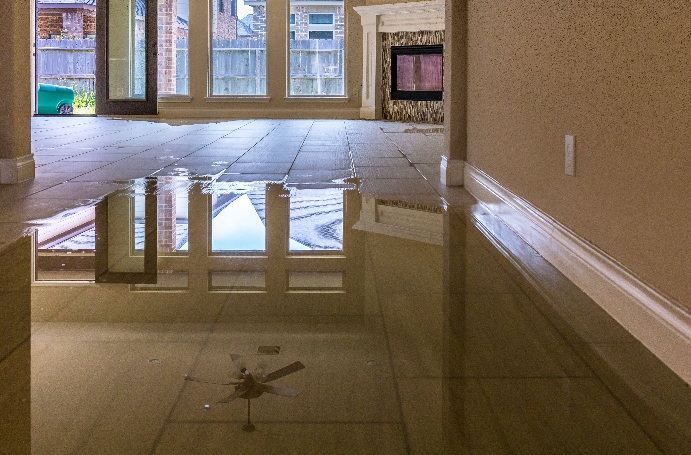Floods, leaks, and dampness wreak havoc on structures, posing threats to property value and health prospects. Astonishingly, these water-induced woes can be sidestepped through cutting-edge construction practices and resources. So let’s embark on a revelatory journey uncovering techniques that fortify edifices against such moisture-laden challenges, bolstering resistance for a drier, sturdier future.
Waterproofing Materials for Buildings
One crucial aspect of preventing water damage is using appropriate waterproofing materials during the construction process. These materials include waterproof membranes, cementitious waterproof coatings, and self-adhesive membrane products. For instance, liquid-applied membranes are flexible and can form a seamless layer of protection over surfaces. Cementitious coatings, on the other hand, create a breathable finish on both internal and external walls.
Innovative Construction Techniques
Building design has come a long way with innovations focused on keeping structures safer from water damage. Advanced techniques like Insulated Concrete Forms (ICFs) offer an advantage in terms of energy efficiency while providing superior resistance against water ingress. Another example is aerated concrete blocks which are not only lightweight but also possess excellent insulation properties and exceptional moisture resistance.
Importance of Proper Drainage Systems
Effective drainage systems play a critical role in preventing water damage within a building’s structure. By directing excess water away from the building’s foundations and walls, you reduce the risk of erosion, pooling, and other problems associated with excessive moisture. These systems may include gutters, downspouts, French drains or even roof scuppers to guide precipitation away from key areas effectively.
Foundation Waterproofing Methods
A solid foundation is key to any structure’s longevity. This makes it essential to ensure proper waterproofing practices are implemented during construction. External foundation waterproofing involves applying membranes or coatings that prevent ground moisture from penetrating basement walls. Internal foundation waterproofing employs materials like vapor barriers or sealing cracks with appropriate sealants to combat any seepage or unwanted moisture.
Advanced Roofing Materials and Designs
Modern roofing materials, such as metal or rubber shingles, offer improved waterproofing abilities compared to traditional asphalt shingles. Additionally, evaluating roof designs that facilitate proper water runoff is crucial. This involves designing a slope and drainage system that will minimize the risk of water pooling in specific areas which could otherwise lead to leaks or seepage.
Utilizing Green Roofs Effectively
Green roofs, made of soil and vegetation layers, can serve as an excellent way to mitigate water damage. They help absorb excess rainwater, naturally diminishing the risk of flooding, while also improving thermal insulation properties. Implementing green roofs in appropriate climates contributes to a building’s efficiency, reduces its environmental impact, and provides additional green space for occupants.
Vapor Barriers and Permeability Control
The proper use of vapor barriers can significantly decrease the amount of moisture migrating through a building’s walls or floors. These materials obstruct the movement of water vapor, reducing condensation risks within the structure. When properly installed, they help prevent mold growth and other related issues stemming from excess humidity.
Moisture-Resistant Building Envelopes
Incorporating moisture-resistant envelopes is essential when constructing buildings exposed to humid or wet environments. These envelopes are designed with durable and non-permeable materials like fritted glass or high-density fiber cement panels which provide excellent protection against moisture penetration.
Insulation Materials to Prevent Damage
Water-resistant insulation types such as closed-cell spray foam insulation are highly effective in preventing heat transfer through walls without allowing moisture buildup. These materials fill all small gaps eliminating potential pockets for condensation and helping maintain optimal internal humidity levels.
Effective Landscaping for Water Management
A well-designed landscape plays a significant role in controlling surface water near buildings. Incorporating graded slopes effectively directs water flow away from foundations while creating catch basins assists with stormwater management by temporarily storing water during heavy rainfalls.
Monitoring Systems for Leak Detection
Using modern monitoring systems like moisture sensors and smart water valves can detect early signs of leaks, thus minimizing potential losses caused by unknown water damage. Building management systems that incorporate these technologies can not only provide warnings for leaks but also remotely shut off water supply to prevent further damage.
Designing Internal Plumbing Systems
Implementing plumbing best practices during the construction process helps prevent leaks and potential property damage. Insulating pipes, using high-quality materials, and installing watertight connections are vital measures in designing a robust plumbing system that minimizes the risk of cracks or bursts.
Maintenance Guidelines for Watertight Structures
Preventative maintenance is an essential step towards maintaining watertight structures. Ensuring a professional company like Summit Clean water damage restoration in Salem Oregon handles regular inspection visits allows them to identify issues before they develop into significant problems. Regular checks on roofing components, waterproof coatings, and other key components help extend the life of your building while minimizing the risk associated with water-related damages. Even with modern waterproofing methods, unexpected failures still occur. In these cases, a rapid response is critical to prevent hidden structural damage and mould growth. Reztor Restoration’s 24/7 emergency water damage restoration services provide immediate support, helping property owners recover quickly and minimise long-term repair costs.
Conclusion
As concerns about climate change and its impact on weather patterns continue to grow, innovative construction methods will become even more critical in helping buildings withstand potential water damage risks. By incorporating proper drainage systems, advanced materials, innovative designs, and effective maintenance schedules, we can create structures that are more resilient against the effects of excess moisture. Preventing water damage saves money in terms of repairs while enhancing the comfort and health of building occupants for years to come.

